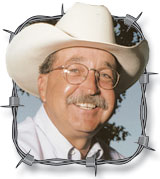Recently, I attended the Dallas County Cattlemen’s meeting and was very impressed with the turnout. The group brought in a livestock economist to offer insights on what 2013 will bring.
No one really knows what 2013 will bring but by looking at history, market prices and weather patterns an economist can give forecasting a shot. I’d like to share some of his predictions with you.
“Cattle producers should hope for a big corn acreage this spring, with rain in June and July. Also, hope for continued recovery in the general economy,” Scott Brown, University of Missouri livestock economist told Dallas County Cattlemen. “As more people get jobs, that creates more demand for beef.” I think we can all agree with this however, weather folks say 2013 will be another dry year.
Brown stated that crop insurance numbers suggest that more acres of corn and beans will be planted in 2013. From the livestock point of view, crop payments have reduced the volatility in planting. Brown also suggested that more untraditional areas will be planted in crops this year causing hay acres to decline and hay prices to increase.
On the cattle side, cow numbers continue to decline and that means fewer calves going to market. A short calf supply and strong demand equals a strong beef outlook. Brown mentioned that domestic consumption is shrinking. Feed costs and exports are taking product away from the U.S. and exporting product to Korea, China and Japan.
We will continue to see increased food costs in 2013 according to Brown. Beef prices have increased by 20 percent and pork prices have increased by 15 percent. These increases have a lot to do with weather and energy prices.
Of course, economic growth and a climb in jobs will play a big part in our cattle outlook. “Growth is good for us,” Brown told cattlemen. “If there is income growth, this time next year there will be big smiles on your faces.”
If China decides to play a bigger part in U.S. beef our economy will grow. China is important – the middle class demands beef.
On the other hand, Brazilian beef is becoming more like a “U.S. type beef.” As of right now Brazilian exports do not directly compete with U.S. exports but Brown cautioned, “We don’t want to allow that competition to get too far down the road.” The question was raised by Brown, “What kind of technology are we employing in the U.S.? We need to stay competitive.” Beef producers in other countries are using advanced technology also.
Brown suggested that producers producing what the consumer wants will come out ahead. Consumers show growing demand for quality beef. “As you rebuild your herds, aim not just for numbers but for quality. Premiums paid for quality beef continue to grow,” Brown said.
By putting the best product in front of consumers beef producers will succeed. Brown concluded, “There’s great opportunity ahead. Just hope we have a great corn crop this year.”






